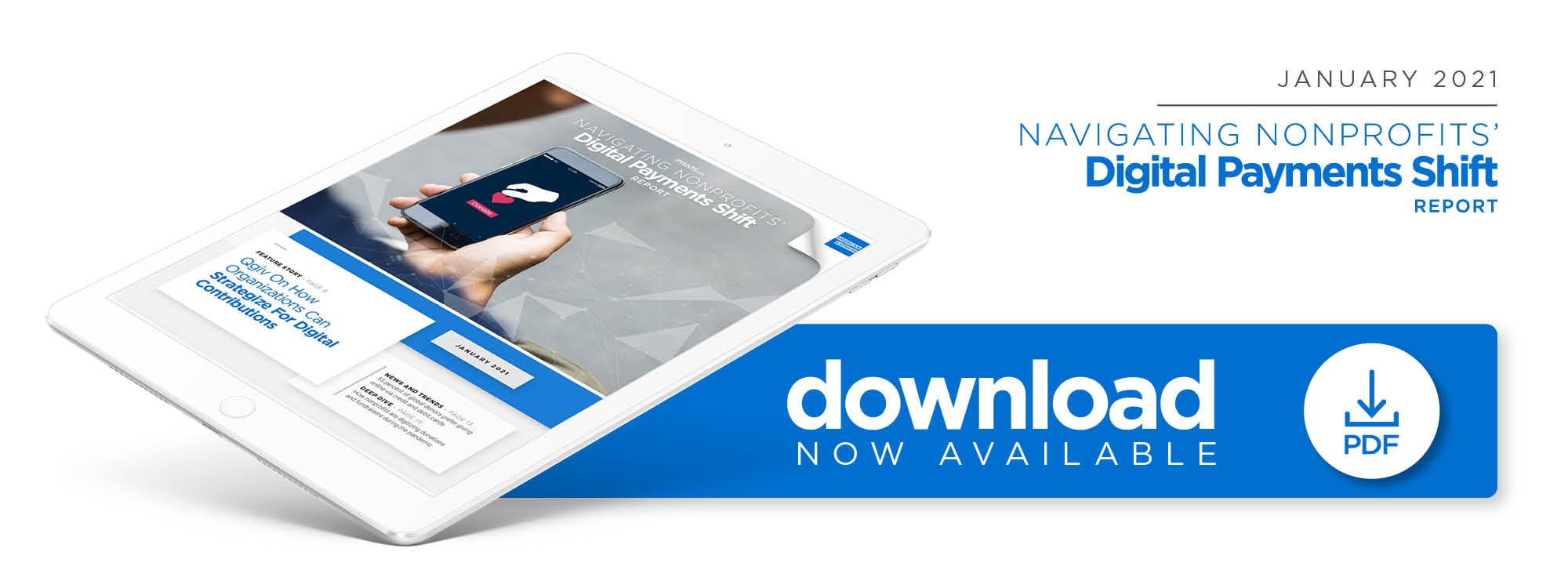Deep Dive: How Digital Donations, Virtual Fundraisers Can Help Nonprofits Pivot Amid The Pandemic

Charities have become hard-pressed to meet recipients’ needs as financial distress grows during the pandemic. More consumers are struggling with food insecurity and unemployment, placing greater demand on food banks and other nonprofits. These organizations are finding it more difficult to effectively use traditional fundraising methods to fuel their services, however.
Nonprofits have hit hurdles in raising money, due in part to health concerns that make it unsafe to host in-person fundraising events like benefits, concerts and dinners. Consumers may be less willing to let go of their money during this time of financial uncertainty, and street volunteers may be finding it more challenging to collect donations because of reduced foot traffic, with many consumers staying home. Those who do venture out may also be carrying less cash, meaning they have fewer funds to donate.
Nonprofits now confronting these challenges are becoming creative and revising their donation strategies as they seek to uphold their missions during the pandemic. This Deep Dive examines how nonprofits are adopting digital donation methods and virtual fundraising to finance their important work.
Digital Donations
Declining donation levels are a serious problem for many nonprofits. A survey of 1,997 nonprofit professionals conducted between September and October 2020 found that 56 percent said their fundraising efforts drew in less money than planned. This makes it essential that organizations adopt new strategies to fill some of that gap. Nonprofits may find that becoming digital-friendly is critical to recruiting donors and soliciting contributions, especially when consumers are leaving their homes less often and spending more time online.
Accepting donations digitally can also help because many consumers are carrying less cash than they used to, meaning that physical collection buckets may be less effective in yielding impromptu contributions. Consumers’ overall shift away from cash during the pandemic is partially due to worries that the virus could potentially linger on physical bills. WHO has clarified that this should not be a concern, but this information has not stopped shoppers from switching to using contactless payment methods more heavily. Half of 2,000 U.S. adults in an August survey said that they are using less cash during the pandemic, and 58 percent did not intend to return to using cash even after the global health crisis ends. Revelations that using cash is unlikely to increase viral transmission do not appear to have reached all consumers, as 80 percent of respondents in a PYMNTS study from October 2020 still believed that using contactless transactions and ditching cash would make them safer.
Nonprofits can appeal to these consumers by offering digital donation methods. The Salvation Army experimented with posting QR codes on its collection buckets even before the pandemic, allowing passersby to scan the codes with their smartphones and give virtually, for example. London’s Air Ambulance charity also held a weeklong donation drive during which it placed street-side advertising that included QR codes directing passersby to donation pages. These and other methods make spur-of-the-moment digital donations quick and easy.
Virtual Fundraising
Nonprofits are not only adopting digital tools for accepting funds, but also using virtual methods to inspire contributions. The pandemic caused problems for charities that typically host in-person events to boost donations, with 48 percent of survey respondents saying they had to cancel one or more fundraising events and 40 percent postponing at least one event. The pandemic hit during what is normally the peak of spring fundraising, making it especially disruptive to nonprofits’ budgets.
Some organizations have responded by launching virtual events instead. Charity runs and walks have gone virtual, with participants logging step counts, while other organizations are using platforms like Facebook, Twitch and YouTube to host livestreamed gaming tournaments and comedy shows. Sixty-two percent of nonprofit professionals said that they converted a formerly in-person event to a digital one, and 70 percent of those who had done so believed the event was successful. Just 3 percent found no success. Other nonprofits responded to new constraints with hybrid approaches, scaling down in-person events and livestreaming them to appeal to a wider base of virtual donors. Such approaches appear popular, with 42 percent of surveyed nonprofits intending to hold hybrid events in 2021 — up from 19 percent that did so in 2020. Forty-five percent anticipated holding virtual events in 2021 as well, and an equal share expected to be able to resume in-person events.
The public health crisis has thrown new obstacles at nonprofits, but these organizations are innovating to make it as easy as possible for donors to contribute. Digital payment options and virtual fundraising events could become valuable parts of nonprofits’ toolkits for the rest of the pandemic and beyond.

